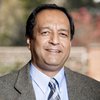What percentage of the new medical graduates from the burgeoning number ( at least 20) of new medical colleges will stay in Nepal? Second, of those that stay in Nepal, what demographic features characterizes them versus those that leave? These were questions thatDr Mark Zimmerman and his colleagues set out to find in a study ( based primarily on the findings of Nepal’s oldest medical college, Institute of Medicine ( IOM), Maharajgunj) published in the Aug 14, 2012 issue of the British Medical Journal.
These questions are obviously important for policy makers in Nepal to help determine which kind of medical graduates will “stay home” and render their services to the Nepali society. Previous studies in high income countries have shown that medical graduates with rural backgrounds are more likely to work in rural locations. So, one of the question was, would the study from Nepal also replicate this finding?
The authors tracked 710 graduate doctors from the first 22 classes (1983-2004) of IOM to their current practice locations. They analysed seven factors including sex, age entering medical school, place of birth, place of high school, type of pre-medical education, and academic rank. Basically the results showed that from these 22 classes roughly a third each were working in Nepal’s rural district( 27%), in Kathmandu ( 37%) and abroad ( 36%).Of those working abroad, 188 (73%) were in the United States.
The fascinating finding was that those that had worked as paramedics prior to medical school ( for example health assistants) were twice as likely to be working in Nepal and 3.5 times as likely to be in rural Nepal compared to those graduates who only had a college science background. And indeed in keeping with studies from high income countries, a rural birthplace was also independently associated with working in rural Nepal. Entrance to medical college at an older age also made it more likely that the doctor would work in rural areas.
Clearly the study had limitations. Only one medical school was taken into consideration. The study was limited to the time period of 1983, when the first IOM class graduated to 2004. So in a sense the data is ten years old during which time many medical schools have mushroomed and many students have graduated. Nonetheless this appears to be a painstakingly carried out study with important, unique findings from a South Asian perspective. Importantly since ours is not a documenting society, there are hardly any studies from our part of the world tracking medical graduates in this manner. Sadly India, with > 1 billion population and a long track record of many English medium medical colleges, does not seem to have published any recent studies in good quality, peer-reviewed journals tracking its medical students as this study has done. So in a sense this study from Nepal has filled an important void, and the authors are to be commended.
However, the results of the study give us pause.The IOM which admitted most medical students with paramedic background stopped doing this for unclear reasons and clearly reversed its procedure and limited its admissions to generally very young doctors with a science background. Based on the findings of the Zimmerman et al study, this unnecessary shift has been counterproductive to the aims of policy makers who wish doctors to stay in Nepal. There are obvious exception to this rule; and one of them is young DrAmoghBasnyat who recently graduated from IOM and works in rural Kalikot District Hospital in western Nepal as a MD GP( doctor who specializes in general practice) and provides vital medical service ( including performing the life-savingCaesarian Section when necessary in situations of obstructed labour) to the denizens of this far flung area. And there is also the newPatan Academy of Health Sciences, which through a series of elaborate tests and interviews focuses on choosing potential medical students who are truly motivated to work in rural settings.

Buddha Basnyat MD
Buddha Basnyat, MD, MSc, FACP, FRCP, Director of the Oxford University Clinical Research Unit-Patan Academy of Health Sciences, Kathmandu.
- Altitude Sickness
- Feb 20, 2018
- Post-earthquake Nepal: The Way Forward
- Dec 13, 2015
- The Annapurna Sanctuary
- Nov 29, 2015
- Diarrhea at the Summit
- Nov 08, 2015
- Altitude Sickness ( AMS, HAPE, HACE)
- Oct 15, 2015
















